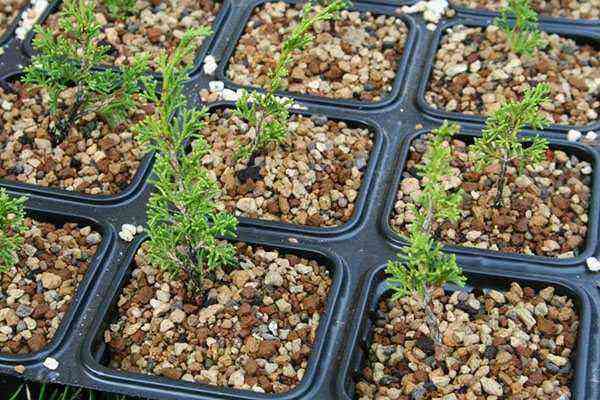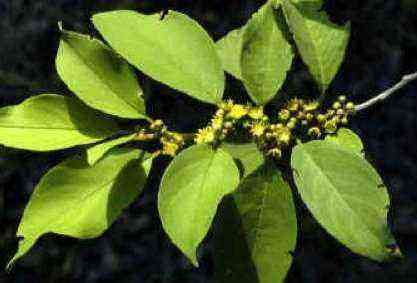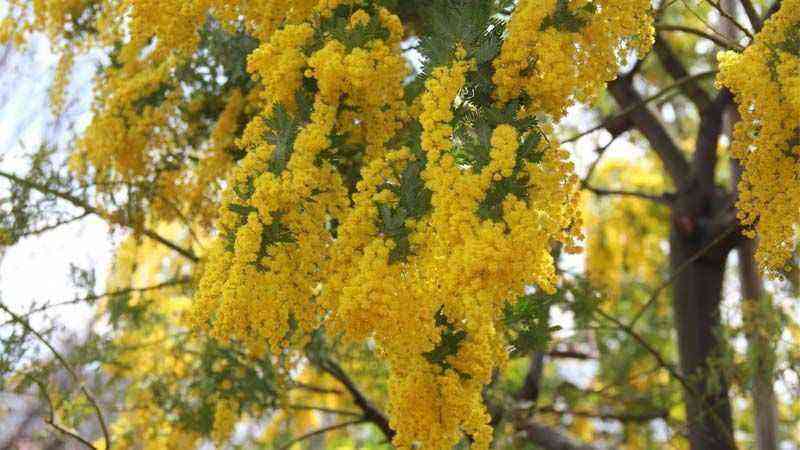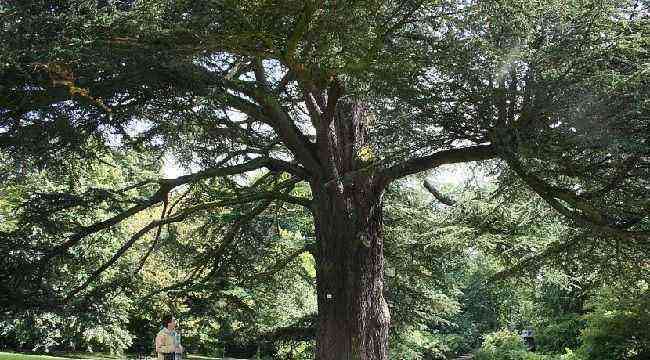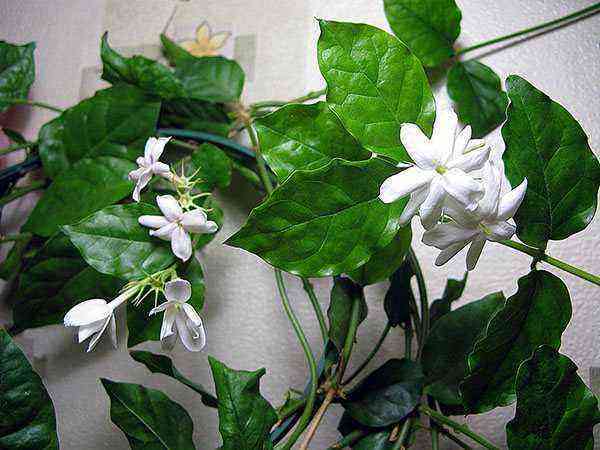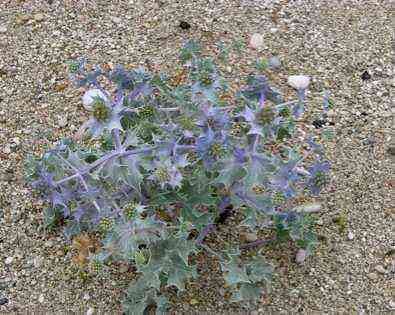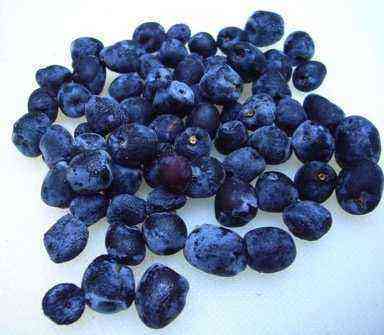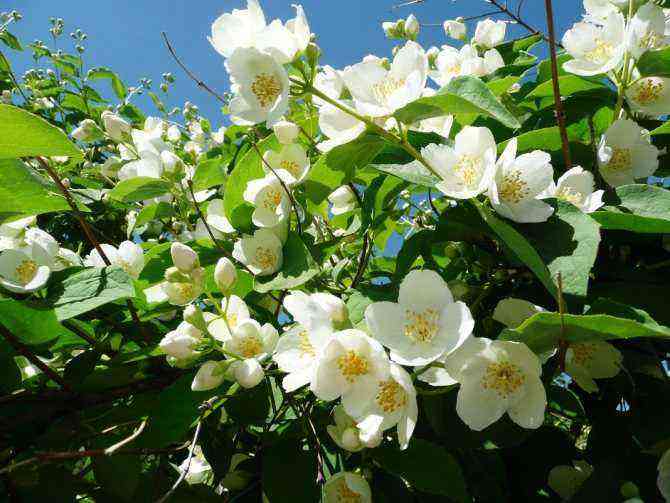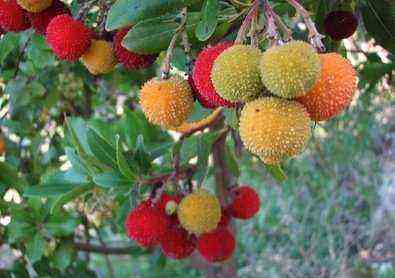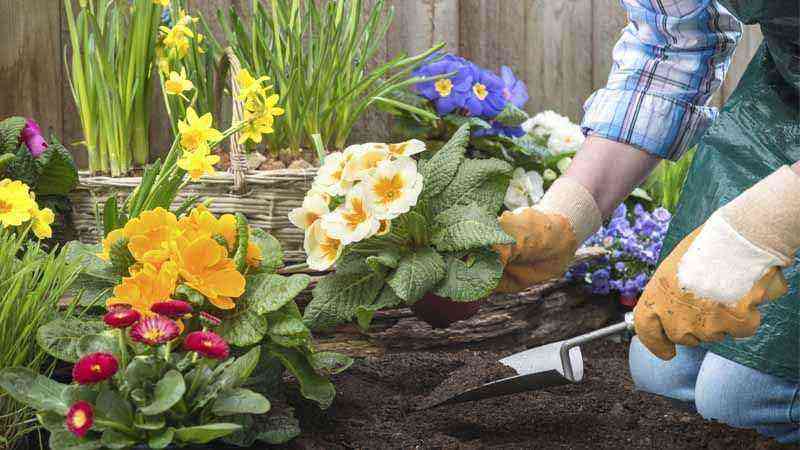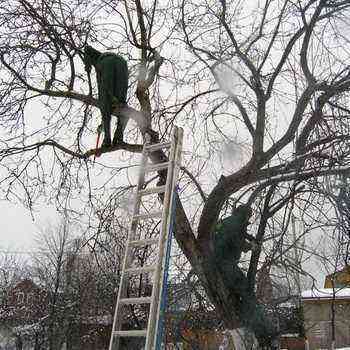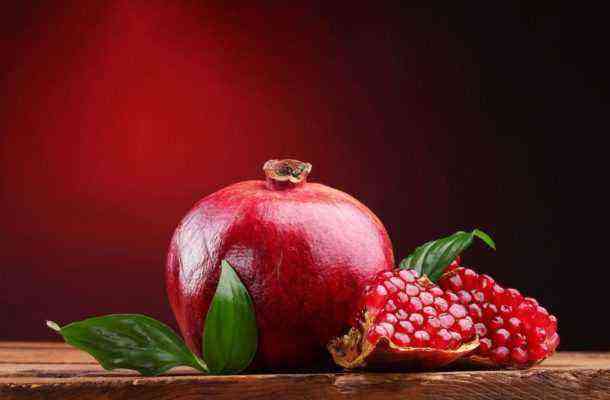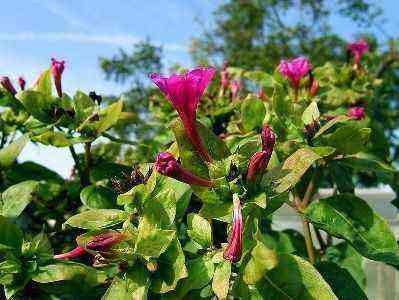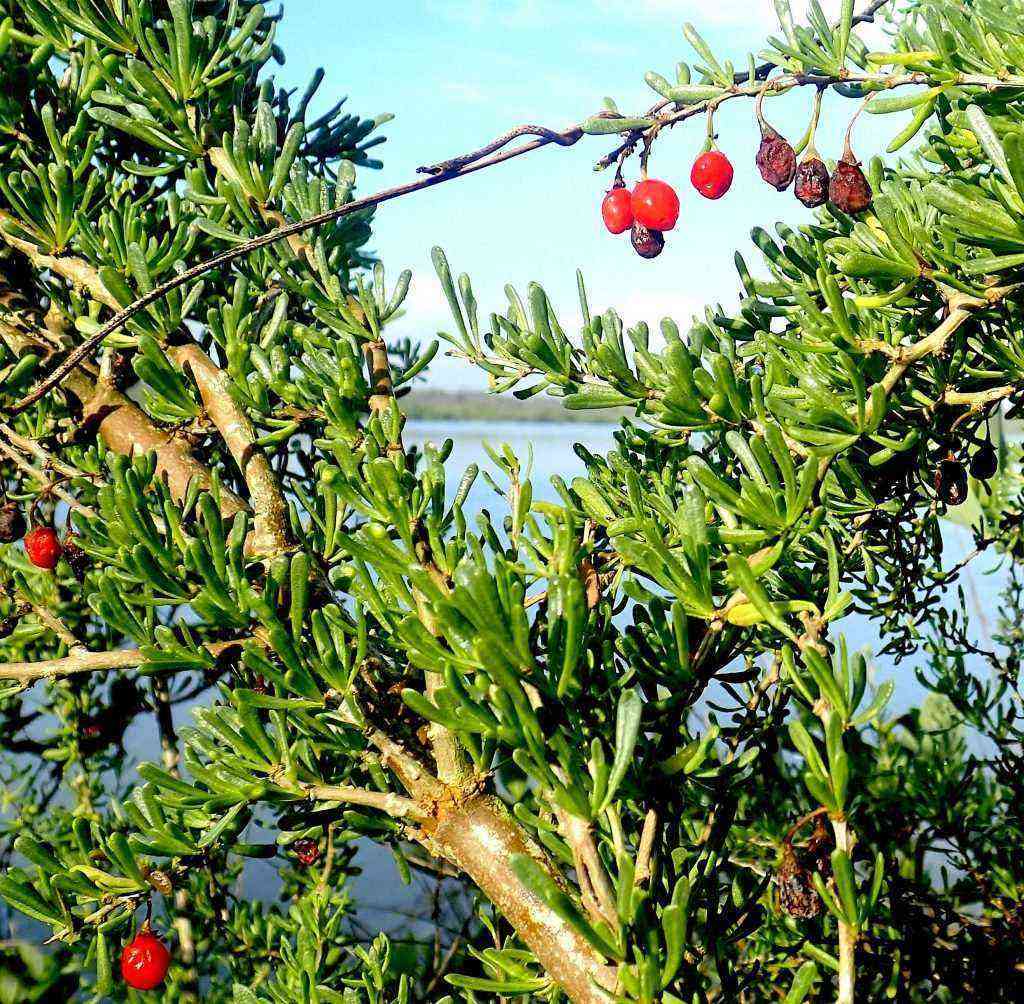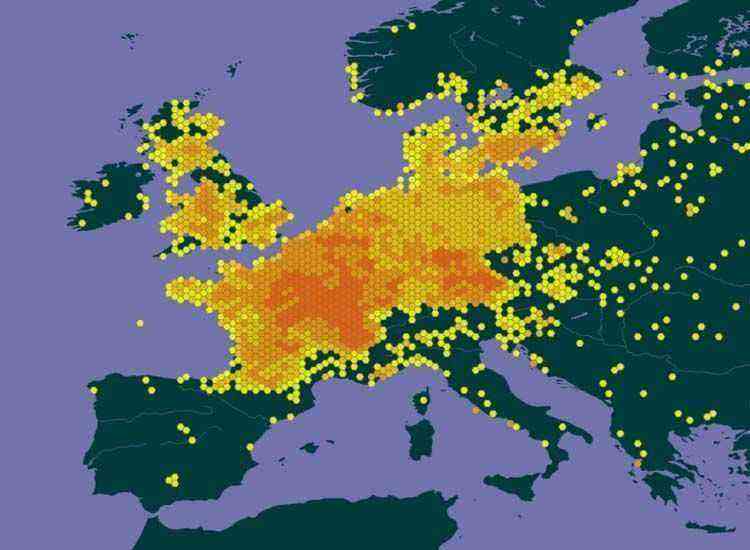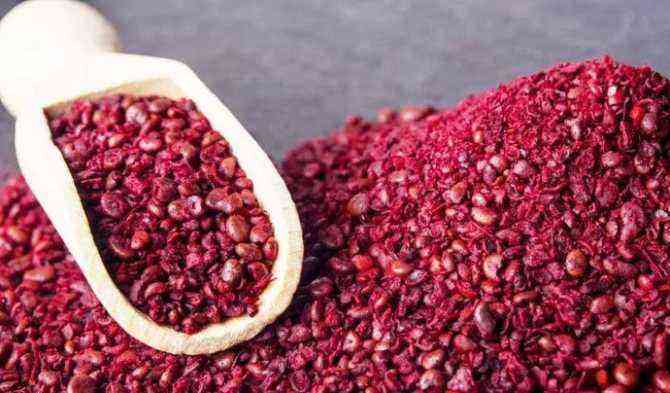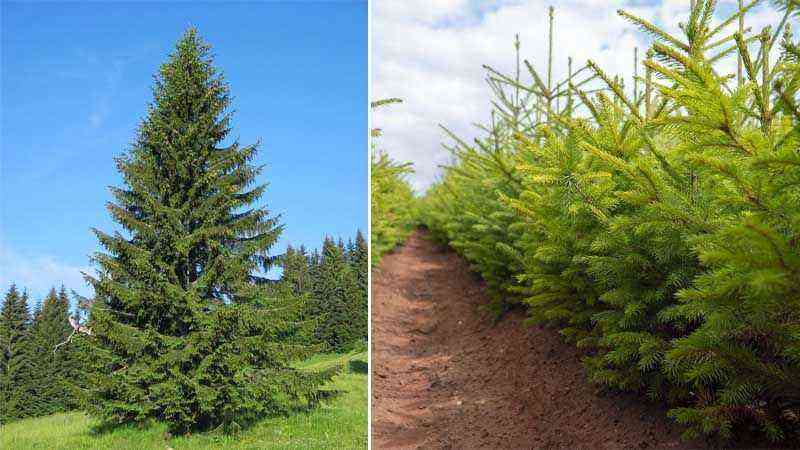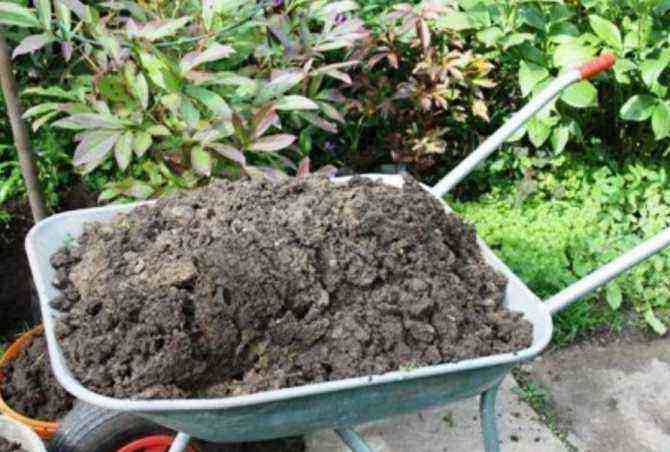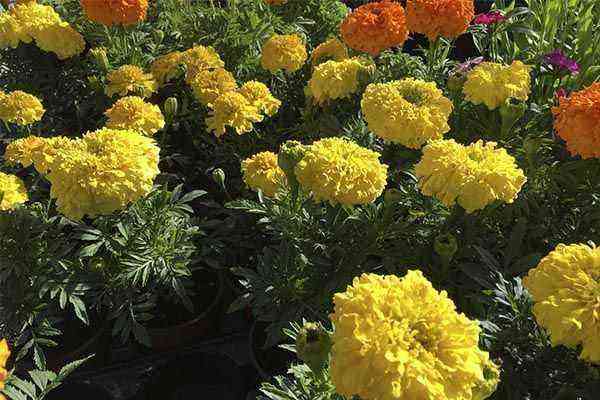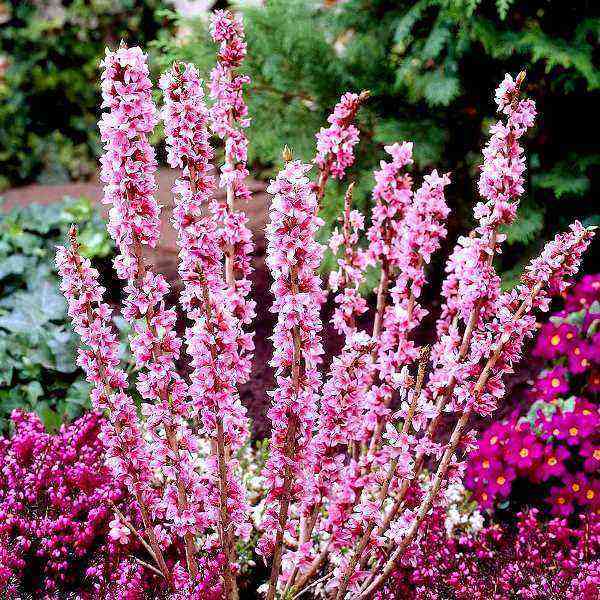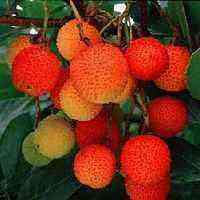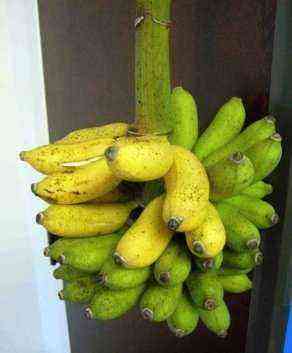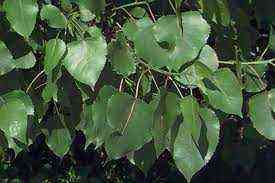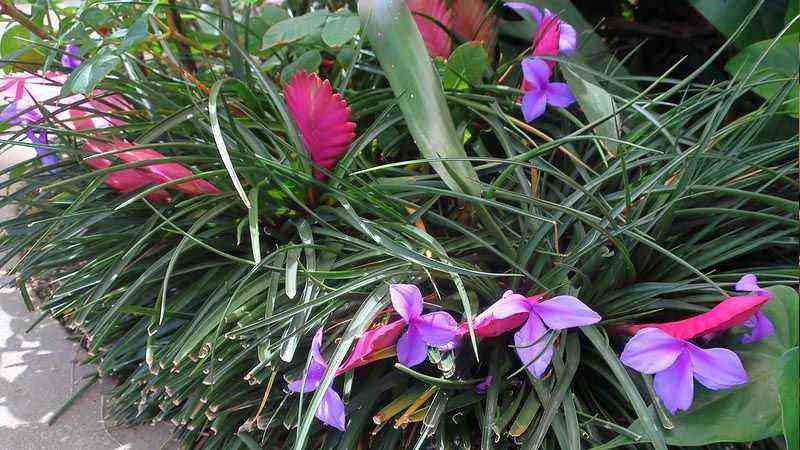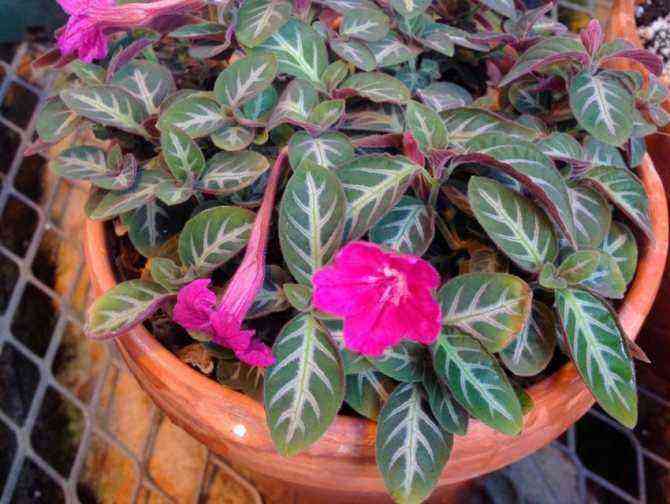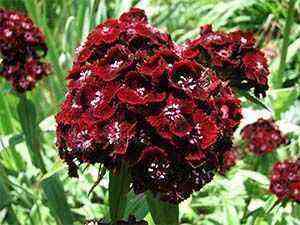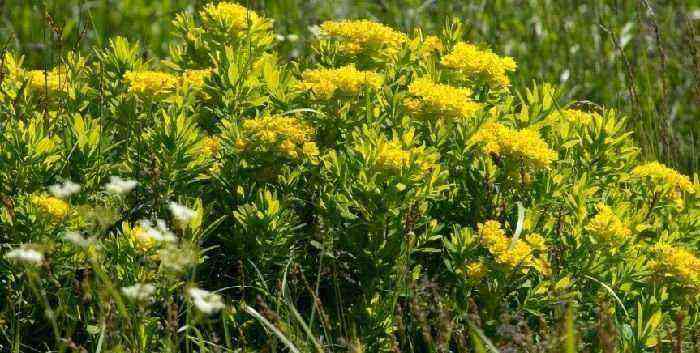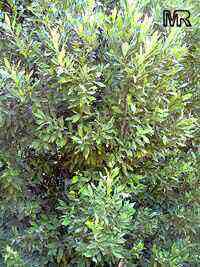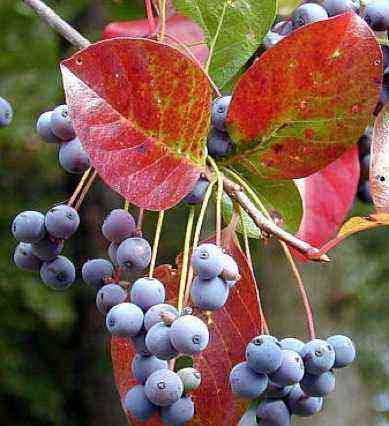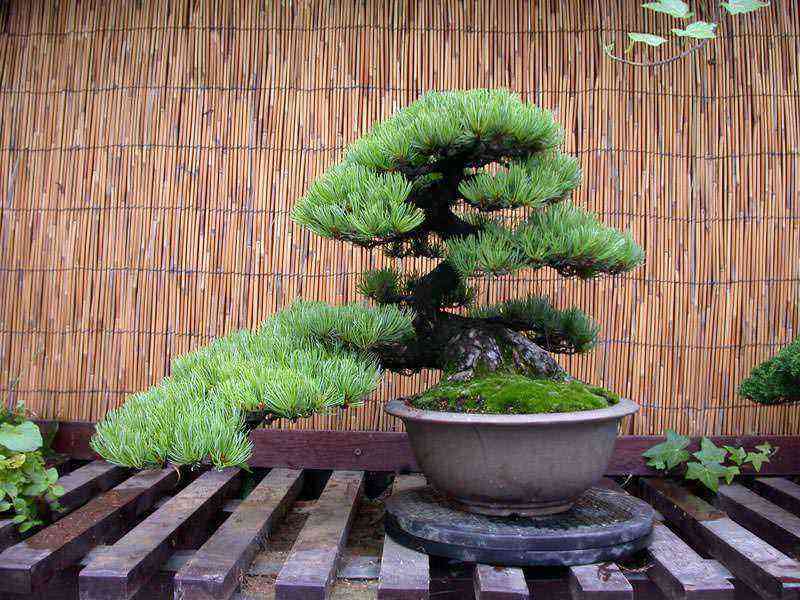Having planted several bushes in one line, it is easy to create a spectacular hedge, and single specimens go well with fir, spruce, hosts, flower beds. True, there is one “but” – a small bush in a pot 15 cm high costs at least 300-500 rubles, and a tree about a meter will cost a summer resident 2-3 thousand. Therefore, most people practice the reproduction of juniper in different ways in order to get several shoots for subsequent cultivation without special costs.
Features of reproduction
Representatives of conifers, which include juniper, are long-livers. Their main difference is that the vegetative stage of fruiting occurs much later than in other plants.
The first cones appear at 9-10 years of age, they ripen for 2-3 years.
In their natural environment, dioecious conifers, which have female and male cones, reproduce by seeds and spores through their distribution in nature over long distances by winds and birds.
The seed method is suitable for ordinary varieties and is not suitable for decorative seedlings, because does not retain its original qualities.
Artificial conditions require long-term stratification – holding in the cold. The sprouts obtained from seeds often do not take root well due to the underdevelopment and weakness of the root system.
The method of cuttings is best suited for propagation of junipers, it is faster and easier, and it can also be done at home. Main advantages:
- the obtained seedlings show intensive growth and development rates, reaching the size of an adult plant 3-4 years earlier than seedlings from seeds;
- the next generation retains the quality characteristics of the mother tree;
- the adaptation period for cuttings to new growing conditions is reduced;
- resistance to environmental factors in the resulting young seedlings is higher;
- the method gives a high rooting rate and is suitable for all varieties.
Is it possible to propagate a juniper by cuttings
Conifers are difficult to cut by cuttings, and juniper is no exception. Even if all the necessary conditions are met, the percentage of rooting of cuttings does not exceed 50, which is a good indicator. Growing a juniper from a cuttings is the only way to propagate the ornamental species of this evergreen shrub. You can do this with the help of seeds, but in this way it is possible to get only seedlings – plants that have not retained varietal characteristics. The seed propagation process of juniper is difficult and time-consuming, which is why most gardeners prefer to use the well-proven vegetative method.
Some gardeners are trying to replant juniper bushes transferred from the wild to the site. Most of the time, however, this ends in failure. It is better not to dig a forest juniper, but to propagate it by cuttings, cutting off several promising branches from a wild-growing bush.
Dates
Reproduction of juniper can occur all year round, throughout the season, not excluding winter.
- In the summer – with branches and layering. Mostly propagated by creeping, creeping varieties, but this is not the best period for obtaining seedlings from prickly horizontal varieties, harvesting is carried out no later than July, so that the plants have time to take root by winter and not freeze out.
- Autumn is suitable for the seed method.
- In winter, it is better to use cuttings, planting planting material in a heated room. It is prepared from the first days of February to be planted next month.
- In the spring, they are rooted with branches or propagated by layering with lateral shoots fixed in the horizontal direction.
Description and features of the plant
Junipers have an extremely long lifespan. They can grow up to 500 years old. The culture is used to decorate parks, gardens, and personal plots. She is planted:
The needles of junipers are mainly of the needle type, subulate, tough. The length of each needles ranges from 1 to 2,5 cm. They are arranged in 2-3 pieces in whorls along the shoot. Older plants have small, scaly needles. Cones are similar to berries because they have a fleshy outer shell. Ripen for 2-3 years.
The size of the bush depends on the variety. There are pyramidal, spreading or creeping varieties. The height reaches 1,5 m.
The culture is developing slowly. The only exceptions are a few species of fast-growing junipers, in particular, the Cossack. It has many beautiful forms, which are most common in Russia, Europe and Asia.
Pay attention!
Junipers are light-loving, long-lasting and drought-resistant plants. Most of the species are winter-hardy, not demanding on the quality of the soil and thrive even on poor soils. The root system is well developed. It improves the structure of the earth by loosening it and circulating air.
Description of the technology
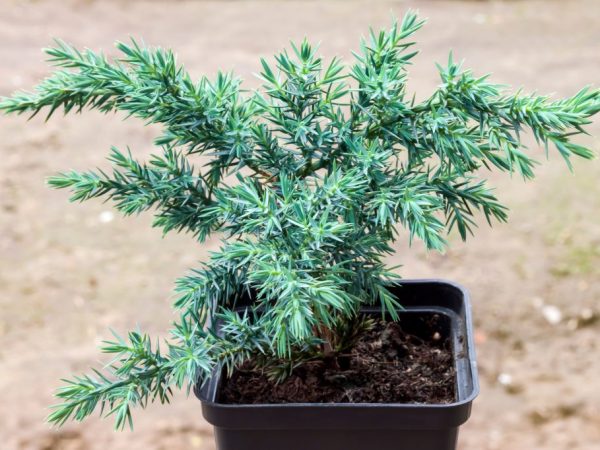

We breed junipers in small pots
There are certain varieties of juniper that are best propagated by cuttings. It:
- Meyeri;
- Holger;
- Kurivao Gold;
- Mint Julep;
- Mordigan Gold;
- Wiltons;
- Dream Joy;
- Lime Glow;
- Gold Coast;
- Hit.
Substrate Preparation
For rooting of blanks, a soil mixture is made from humus and peat taken in equal proportions. It is allowed to add river sand, crushed charcoal and perlite.
Lime, lime flour and ash powder help to neutralize excess acidity.
Preparation of cuttings
The harvesting of planting material is carried out throughout the garden season, starting in early spring and pumping in late autumn, but the most suitable time for this is April-May.
As a donor tree, specimens of 8-10 years old are suitable, in which varietal characteristics have already formed.
Shoots are harvested from not yet lignified green juniper branches, taking into account the peculiarities of the species:
- for columnar varieties – from those growing in the upper part;
- for spherical varieties – from those growing on the sides.
The average length of the cutting to which the shoot should be cut is about 0,15-0,2 m. The maximum possible length is 0,25 m. The fence is carried out together with a part of the bark, the so-called heel.
For creeping juniper varieties, cuttings are removed from vertically arranged branches.
The best time for cutting planting material is early in the morning. Before planting, the cuttings in the lower part (about 4-5 cm) are cleaned of needles and bark and kept for 0,5 days in an aqueous solution of Epin. In the upper part of the shoots, the needles are left for aeration.
Rooting
For rooting, creeping juniper varieties are planted in a prepared nutrient substrate at an angle of 45 ° C, other varieties – in a vertical direction.
In the soil I make depressions 3-4 cm wide up to 1 cm, inserting a stalk into the hole, sprinkle it with earth and water it. From above, the sprout is covered with polyethylene or a jar.
When placing the shoots in a single container, it is necessary to maintain a distance of 5 cm or more.
One of the ways to root twigs harvested in winter is to plant them in a layer of sphagnum moss, which is pre-soaked in water:
- for the role of a container, take a fabric strip on which the soaked moss is spread;
- sprinkle the cuttings with Kornevin from below and lay them out so that the tops are above the level of the fabric strip, and the lower part is on a sphagnum pillow;
- a strip of fabric is folded in half, covering the bottom of the blanks, and rolled up, fixing with an elastic band;
- the roll is wrapped in polyethylene and placed in a cool place until spring, until the shoots give roots.
Procurement of planting material
Juniper grown from cuttings can grow both healthy and fluffy, and crooked, weakened. This largely depends on how the planting material was collected. In order for the plant to fully meet all your expectations, you should adhere to the following recommendations.
- As a mother plant, it is best to take a plant at the age of 5-8 years, since at an older age, the ability of conifers to root formation is significantly reduced.
- The parent plant must be healthy, with a dense crown of bright color.
- For creeping varieties, the cut location does not matter. In this case, it is important to choose a well-developed, spreading branch that is exposed to sunlight. This is especially true for bright varieties.
- In cone-shaped, columnar and pyramidal varieties, it is necessary to cut the central shoots of the 1-3 orders of magnitude from above. If you take cuttings from a side branch, you run the risk of getting a juniper actively growing to the sides.
- It is important that the branch intended for grafting has a living apical bud and a full-fledged growth cone, otherwise the seedlings will begin to bush strongly.
- Experienced gardeners recommend using shoots on which slight lignification has already begun, since too young cuttings and too old branches give a low percentage of rooting.
- Procurement of material should be done in cloudy weather or early in the morning. This will significantly reduce the evaporation of moisture from the cut area.
- Do not touch overly thin branches, as they will use up the entire supply of nutrients long before the roots begin to grow. It is best to take one-year cuttings with a length of 20-30 cm.
Read also: Pictures depicting mushrooms toadstools

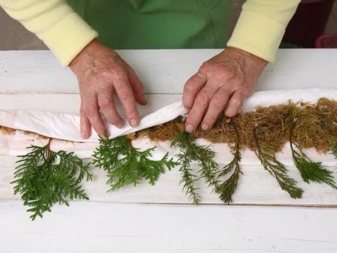
Cuttings obtained from the trunk and large skeletal branches are best taken with a fragment of a tree. This promotes rapid establishment.
It would be more correct not to cut the branches, but to pluck them with a quick downward movement. If the tongue is too long, then it will have to be trimmed.
If the material is harvested from a large and thick shoot, you will need a garden pruner or a knife with a sharp blade, while the cut must necessarily capture 1,5-2 cm of the lignified fragment.
After the planting material is collected, it is necessary to rid the lower part of the cutting of needles by 3-4 cm. It is best to do this with your hands, since in this case, when tearing off, wounds are formed, which will contribute to faster root formation.
Immediately before placing in the substrate, the cut sites are sprinkled with “Kornevin”, “Heteroauxin” or other stimulants based on succinic acid. But it is not necessary to keep the branches in solutions with an activator – with prolonged exposure to moisture, the bark begins to flake off and the plant rots. For the same reason, it is better to carry out further rooting not in a jar of water, but in a container with a nutritious soil mixture.
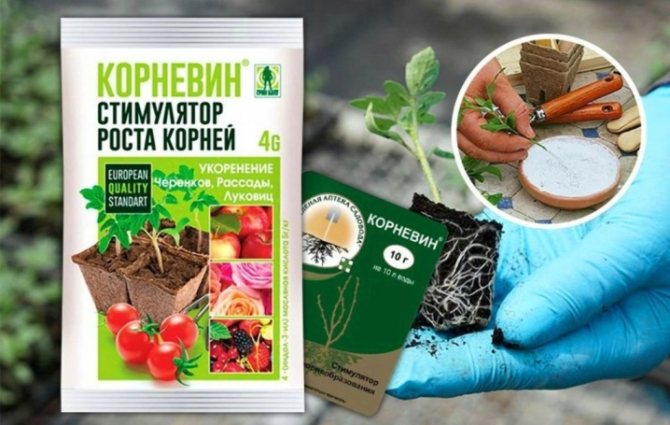
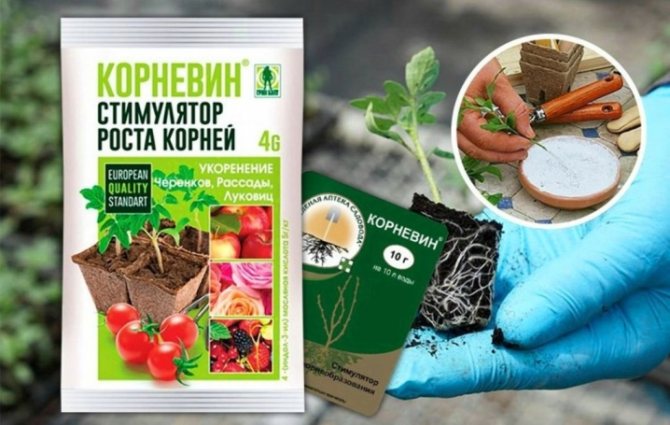
How to stimulate rooting
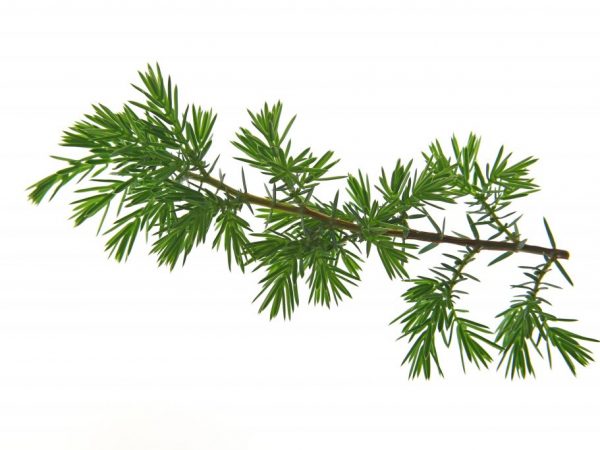
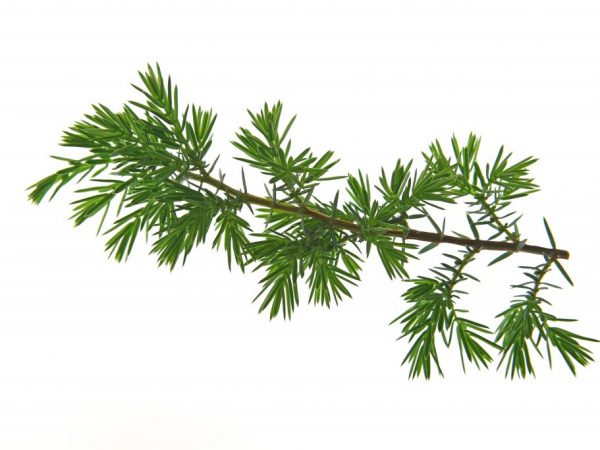
Cuttings can be done at home
It is possible to root cuttings at home with stimulating drugs, but in order to increase the survival rate and shorten the period of root formation, it is better to use root formation stimulants.
Means that activate the development of the root system:
- Kornevin. Developed on the basis of indolylbutyric acid. The dosage is 1 g per 1 liter of water.
- Epin. In addition to activating root formation, serve as a means of increasing immunity. The dosage is 0,5 ml per 1 liter of water.
- Heteroauxin. Refers to phytohormonal preparations based on indoleacetic acid. Dosage – 1 table. For 1 liter of water.
- Zircon. Complex composition from a mixture of hydroxycinnamic acids. The dosage is 1 ml per 1 water.
Folk remedies include:
- sweet water;
- potato tubers;
- baker’s yeast.
Rooting stimulants
The modern market offers gardeners a huge number of drugs to stimulate root formation. Previously, folk remedies were widely used:
- willow water;
- potato tubers;
- yeast.
Now there is no need to waste time preparing solutions with your own hands. Purchased drugs are easy to handle and cost-effective.
The most popular are:
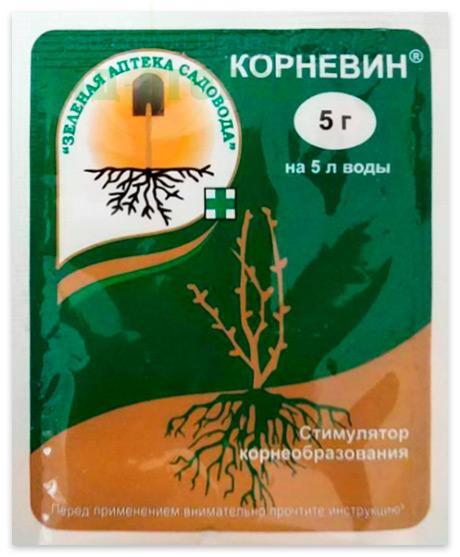
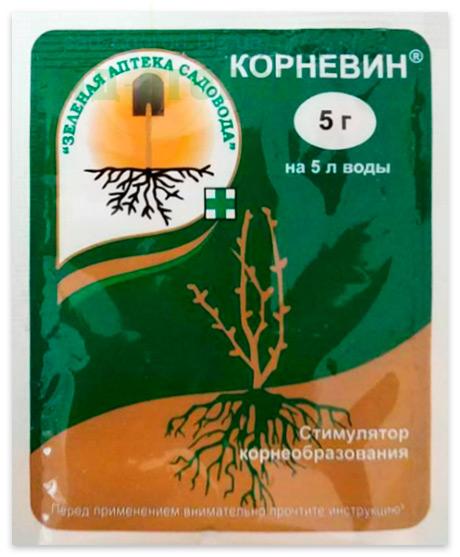
Do not exceed the dosage indicated by the manufacturer, because the opposite effect will occur – inhibition of the planting material.
The cuttings are immersed in the solution for about a third. The remaining liquid is used for irrigation.
Planting cuttings in open ground
The first roots appear on the 25-30th day after planting, and rooting occurs after 2-3 months.
However, it can be transferred to open ground only after the formation of the root system is completed, which usually occurs in the 3rd year. Actively growing new green shoots will tell you about the successful development of roots.
Rooted seedlings can be transplanted earlier than the recommended time for cultivation in a greenhouse.
Transit times vary by region. It is planned so that by the time the first frost occurs, the plant has already had time to adapt to new growing conditions.
Usually, gardeners try to carry out the procedure immediately after the snow melts, as long as there is no risk of burning out the needles in the active sun.
The best place for planting cuttings will be a site well lit by diffused sunlight from the southeast or southwest side with moderately moist soil.
In the open ground, the sprouts are transplanted together with an earthen lump in order to avoid injury to the roots that are not yet fully strengthened, deepening along the root collar. The substrate for the planting pit is made from the same components as for rooting.
A hole is dug to a depth of 1,0 m or more, starting from the size of the earthen coma – 2-3 times its diameter. A drainage system is required.
Rooting soil for cuttings
Ordinary garden soil is not suitable for rooting juniper cuttings. It is necessary to pick up a moisture-permeable loose soil. Many nurseries prefer a mixture of peat and sand. Peat is air permeable and does not have a large amount of nutrients, which is very important when rooting, and sand perfectly absorbs moisture. Ephedra prefer acidic soil, so ash and eggshells cannot be added to the planting mixtures.
The soil in a greenhouse or greenhouse should always be slightly damp. To achieve this result, it is advisable to carry out daily spraying of plants and land mixture. When transshipping junipers or planting them in a permanent place, preference should be given to rich, fertile soil, although this ephedra grows well on poor land.
Care of seedlings
At the initial stage, the cuttings need to create favorable conditions:
- the optimum temperature is 18-23 ° C, at lower rates, the roots begin to rot, and at higher rates, the soil will dry out;
- diffused light, without direct hit on landings;
- periodic ventilation;
- watering – as the soil dries up, usually once a week.
After transplanting into open ground, young seedlings are protected from direct sunlight by shading and shelter, as well as from frost in winter by mulching with spruce branches.
Drought-resistant juniper is watered every 30 days. After 2 years from the moment of planting, they begin to feed it with organic or mineral fertilizers, applying in the summer one-time under the bush at the rate of 45 g for each m².
Methods and subtleties of reproduction
Varietal junipers are best propagated by cuttings, since with the seed method, the maternal qualities are often not repeated (for example, like in thuja). Reproduction by cuttings of a juniper in autumn does not differ from spring and summer. For cuttings, semi-lignified shoots are cut with a length of about 10-15 cm. It is desirable to take them from young plants from the middle and upper parts of the crown, from the growth of the current year.
For the emergence of roots in the planting material, the age of the mother plant is important. The younger, the greater the percentage of rooting. It is better not to cut the cuttings, but to break them.
They are separated from the uterine bush so that a piece of bark (the so-called heel) remains. The ends of the cuttings are cleaned of needles and immersed in a weak solution of manganese for 20 minutes. You can also treat it with root. Then the planting material is buried into the ground by no more than 7 cm. The soil should be loose and permeable.
To retain moisture, cuttings are best planted in a greenhouse or covered with a bottle. I like to plant under a bottle in secluded corners of the garden – it’s convenient. It is not particularly necessary to monitor the moisture in the autumn period, because there is no longer heat, and the soil will not dry out much. This year, the cutting, of course, will not take root, it will only grow overgrown with callus, but next year it will grow the root system much earlier. What a juniper rooted from a cuttings looks like can be seen in the photo.
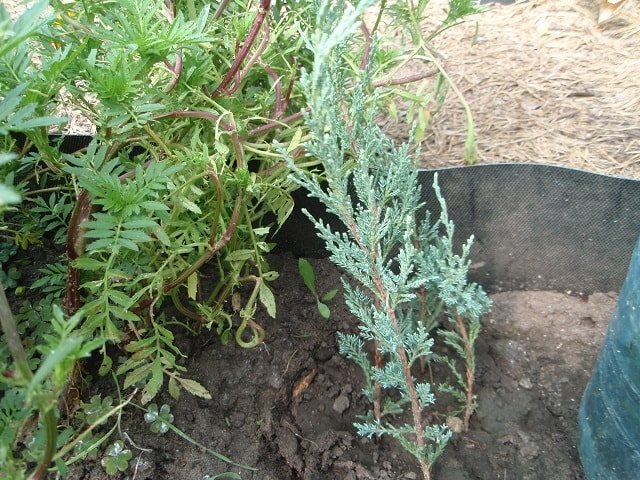
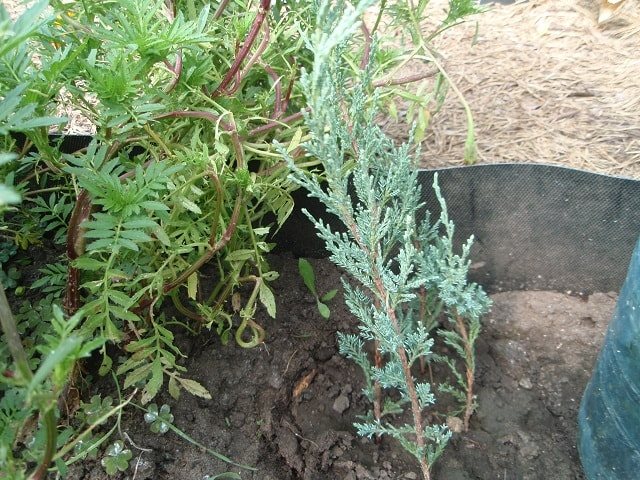
There is another way to propagate juniper by cuttings – at home. But this is if your window sills are not occupied with indoor flowers.
The principle of reproduction is the same, but it is necessary to plant it in prepared containers. To preserve moisture, the pots are placed in dense, transparent, plastic bags, without covering the upper part, in order to avoid rotting of the cuttings. On average, the rooting process at home takes 1,5 months.
What types of juniper are, photos and names can be found here.
When is it better to propagate conifers by cuttings
Cutting of shoots from the mother tree is permissible at any time of the year. The preservation of the genetic material does not depend on the timing of cuttings. Experts are of the opinion that the best time for cuttings is winter. In the first decade, the processes of sap flow are activated in trees.
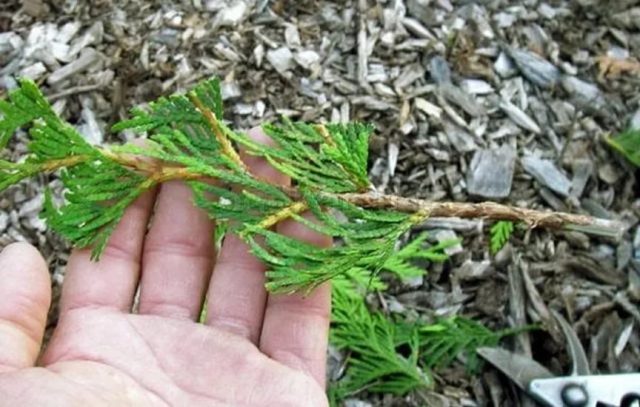
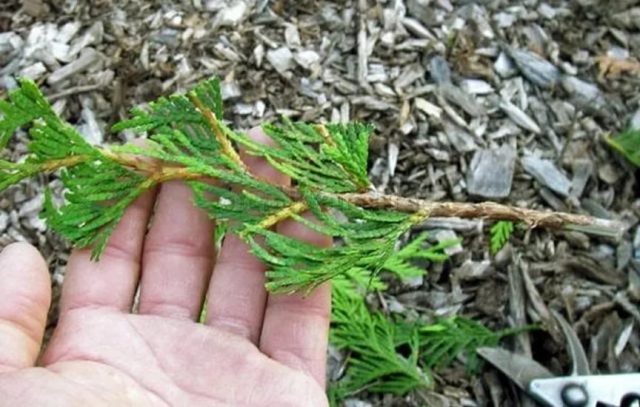
During the period that passes from the moment of harvesting before winter to the beginning of planting, conifers have time to take root well. In summer, strong lignified seedlings are planted on the site.
Reproduction of conifers by cuttings before winter
Harvesting of conifers is carried out before the onset of winter. This increases the plant’s chances of a successful spring-summer planting.
To carry out cuttings of conifers before winter, choose the upper shoots or tops. The length should not exceed 20 cm. After cutting, the cuttings are cleaned of needles, leaving only a part of the bark. If in some places the bark is separated, then it is completely removed.
Rooting of conifers by cuttings before winter is possible in several ways or by mixing them:
The simplest and most effective way is considered to be rooting conifers with water. It is not suitable for all types of plants. Shoots of pines, fir, cypress trees take root poorly by water. Thuja and juniper sprout quickly enough.
Reproduction of conifers by cuttings in autumn
It is possible to grow conifers by cuttings in the fall. Autumn cuttings differ little from winter ones. When using soil, the shoots are left on the terrace or veranda, before the onset of winter they are brought into a warmer room.
Read also Pantry Altai online store of seedlings reviews
Reproduction of conifers by cuttings in summer
For summer grafting of conifers, the method of rooting in boxes is suitable. In summer, shoots need to be watered frequently due to the hot weather. In the fall, they are transferred to the garden bed or taken indoors for the winter to be planted next season.

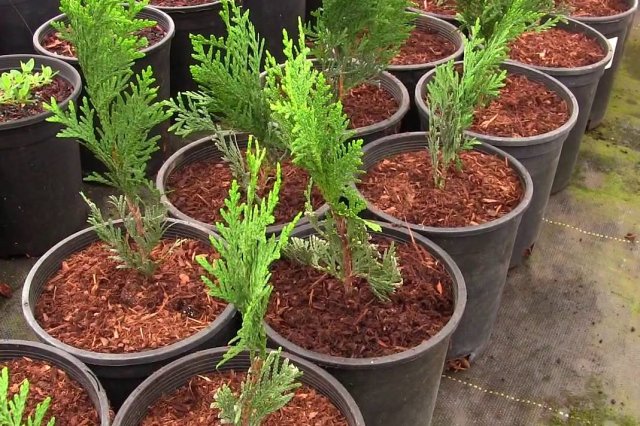
Reproduction of conifers by cuttings in spring
Spring cuttings of conifers are very rare. Experts believe that this period is not suitable for rooting. Shoots spend the summer outdoors, in winter they need room heat.
